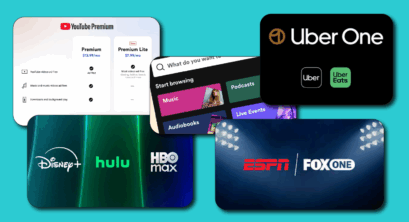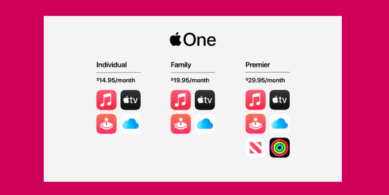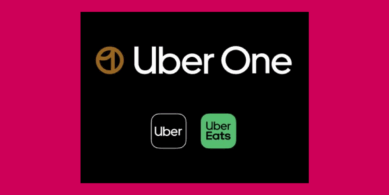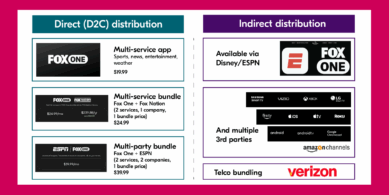Latest subscription trends in the bundle economy: multi-way bundles
by Giles Tongue | 22 Oct 2025

Cast you mind back just a few years and imagine you are on the lookout for a leading subscription service, let’s say Netflix. You would most likely buy it from the iOS App or Google Play Store or directly from their website. The price was clear and as expected – the same price everywhere – and included the same one-month free trial period in all channels.
Simple times. The price was the price. The offer was the offer.
Thanks to the increasing ease of indirect distribution, subscription services can now be bought from a multitude of different places, often with different promotional prices, trial periods, sometimes bundled with other services, sometimes even bundled “on us” or free to the consumer, for example through telco bundling.
The price is no longer the price.
This is leading to a rapidly evolving bundle economy, one where subscriptions are bought indirectly, where the ‘Savvy Subscriber’ shops around for the best deal, and while subscribers crave flexibility and control, what they are given is increasing fragmentation and offers – leading to ongoing subscription fatigue.
This is creating opportunity, and a change in how content providers are going to market, and here we explore some of the latest ways subscription products are coming together in multi-way bundles.
The rise of the indirect channel and the bundle economy
In a recent Bango survey (Subscriptions Assemble) of 5,000 subscribers, over a third of all subscriptions (2 out of an average 5.4 subscriptions) are now acquired through an indirect channel.
OMDIA recently shared that 30% of all Subscription Video on Demand (SVOD) globally is now sold through telco and non-telco bundling.
Amazon Channels is now, according to Antenna, responsible for as much as 100% of sales of certain SVOD, as much as 20%-40% of some of the major SVOD brands.
Bundling of subscription content was initially a tactic of mobile operators, ISPs, PayTV providers, but now is also used by banks, retailers, utility companies and more. (See recent Loyalty pays report by Bango).
And now, a new trend is emerging: content providers bundling and selling each other.
The indirect channel is growing rapidly, with almost weekly announcements of indirect channel partnerships and of cross-brand bundling, in what is referred to as co-opetition, as former competitors join to create powerful high value bundles.
So, let’s take a look at some of these evolutions and give them some definition.
Defining the multi-service app
Before we get started, we need to give a name to an emerging type of app, which once achieved a single purpose and now delivers multiple benefits to the user. A couple of good examples are Netflix, which as well as movies and series, now also delivers live sports and gaming.
Another example is Spotify, which is known primarily for its on demand music streaming, but also provides podcasts and access to audiobooks. These are services which a user could access through single dedicated apps, or get a multi-service experience from one app.
One price point, one brand, one app, multiple services inside.
With this clarification, we can now dial up the complexity.
The multi-service bundle
The multi-service bundle is a single offer and price, that includes multiple subscription services from the same company.
The services may also be available individually from that company. For example, Apple One. Available in the US for $29.95 for the Premier tier. This is a single price, for access to multiple products, otherwise available individually, at a saving.
Apple One Premier includes access to: Apple Music, Apple Arcade (gaming), Apple TV+, Apple Fitness, Apple News, and iCloud (storage).

Another example of the multi-service bundle is Amazon Prime, which in the UK as an example includes access to Amazon Prime one-day delivery (shopping), Amazon Prime Music, Prime Video, Amazon Prime Luna (gaming), Prime Reading as well as various discounts and trials to other amazon service.
YouTube Premium, includes a YouTube experience without advertising, and YouTube Music (a separate app). Uber One, includes Uber Eats (food delivery) and Uber (transportation).

It’s not just big tech offering these multi-service bundles, but they are the most vivid examples today since they include some of the most popular and well-known services.
So, to recap, the multi-service bundle is a single price point, giving access to multiple subscription services, by one company.
Multi-party bundle
And now the multi-party bundle. A single offer and price point that includes multiple subscriptions from different companies. Those services are also available individually directly from each constituent company.
There multi-party bundles could be assembled and sold by another party – for example Verizon offers in MyPerk, Netflix and HBO Max for $10. Two products, from different parties in one price point.
Another example is Disney+, Hulu and HBO Max. This multi-party bundle is made up of subscription services from two companies (Walt Disney and Warner Brothers Discovery), however this time, the bundle is available to buy on their own websites. Go to Disney+ in the US, and you can buy this bundle. Go to HBO Max, and you can buy this bundle.
Fox One: a perfect case study for the future of multi-way bundling
The most recent to launch major subscription service is Fox One, which demonstrates all the sophistication of the bundle economy, in one excellent launch.

Fox One is itself a multi-service app, including sports, news, weather, local tv and more. Available in the US for $19.99.
Fox One can also be bundled with Fox Nation into a slightly higher single price point, two services from one company – a multi-service bundle. Available at $24.99.
Fox One is also available bundled together in a multi-party bundle with ESPN+, available to buy from each other’s sites – two products, two companies, one price. A multi-party bundle, available at $39.99.
Fox One also embraces the full extent of indirect channels, available to buy through AppleTV+, the App stores iOS and Play, Roku and a multitude of others.
And with 30% of all SVOD being sold through telcos, Fox One is bundled with the biggest of them all – Verizon.
Understanding the bundle economy
- Multi-service app: Delivers multiple services and experiences within a single app
- Multi-service bundle: A single offer and price, that includes multiple subscription services from the same company
- Multi-party bundle: A single offer and price that includes multiple subscriptions from different companies
Implications for telcos and content providers
When the subscriber wins, everyone wins, and the new options being created are adding value and reducing costs for subscribers. As multi-way bundles become more prevalent, the potential for telcos to offer something truly unique and differentiating rises and the prospect for subscription brands to reach new customers enhanced.
Stay ahead of the latest subscription and bundling trends
Subscribe to our newsletter below, and join the conversation on LinkedIn
Subscribe to our newsletter
Get the latest subscription bundling news and insights delivered straight to your inbox.



